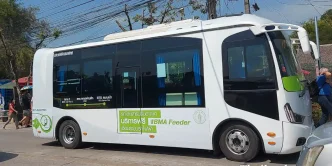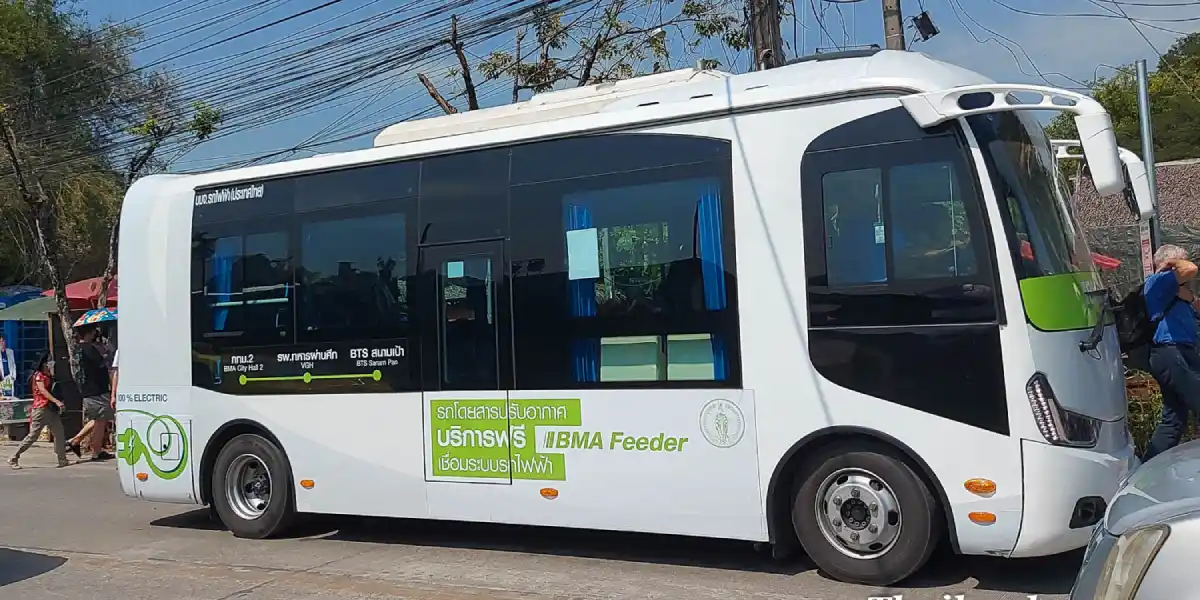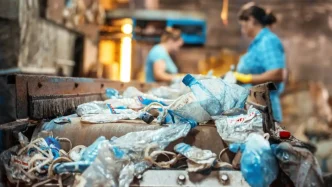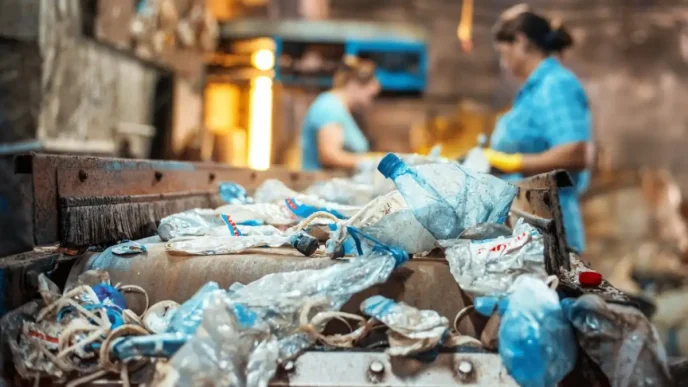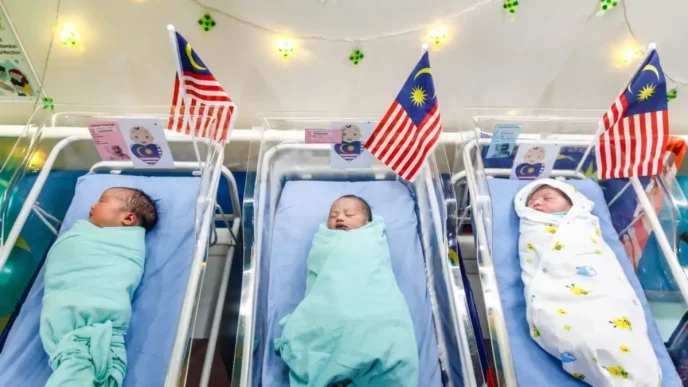In a bid to tackle Bangkok’s notorious traffic congestion and worsening air quality, the Bangkok Metropolitan Administration (BMA) has unveiled plans to expand its innovative BMA Feeder project. The initiative, which connects residents to the city’s rail network through electric shuttle buses, will see five new routes added by July 1, 2025, building on the success of its initial services launched late last year. This move signals a broader push to encourage public transport use and reduce the capital’s reliance on private vehicles.
A Growing Network of Green Transport
The BMA Feeder project, first introduced in December 2024, currently operates two routes: one from Wat Purawas to Phra Phuttha Yodfa Bridge, running on weekdays from 6 AM to 8 PM, and another from Thonburi Market to MRT Lak Song, operating daily over the same hours. These services have provided a critical link for commuters, seamlessly integrating with Bangkok’s existing rail system. Now, with the upcoming expansion, five additional electric shuttle routes will be rolled out, significantly widening access across the sprawling metropolis.
BMA Spokesperson Ekvaranyu Amrapala announced the expansion on Monday, emphasizing the project’s dual aim of easing traffic and improving environmental conditions. “Our goal is to make public transport a convenient and sustainable choice for Bangkok residents” said Amrapala. “By expanding the BMA Feeder network, we hope to reduce the number of private vehicles on our roads and, in turn, lower air pollution levels.”
Addressing Bangkok’s Urban Challenges
Bangkok, home to over 8 million people, has long grappled with gridlocked streets and poor air quality, issues exacerbated by rapid urbanization and a heavy dependence on cars and motorbikes. According to data from the World Health Organization, the city frequently exceeds safe levels of PM2.5—fine particulate matter linked to respiratory and cardiovascular diseases—particularly during the dry season. Traffic congestion, meanwhile, costs the Thai economy billions annually in lost productivity, with commuters often spending hours in standstill traffic.
The BMA Feeder project is part of a broader strategy to address these intertwined problems. By deploying electric shuttle buses, the initiative not only reduces carbon emissions compared to traditional diesel-powered vehicles but also offers a practical alternative for last-mile connectivity to rail stations. This is particularly significant in a city where many residential areas remain poorly served by mass transit, forcing residents to rely on personal transport or informal options like motorbike taxis.
While the specifics of the five new routes have yet to be detailed, the BMA has indicated they will target underserved districts, prioritizing areas with high commuter demand. The expansion is expected to encourage a modal shift, nudging residents away from private vehicles toward a more integrated public transport system. If successful, it could serve as a blueprint for other Southeast Asian cities facing similar urban challenges.
Public Transport as a Policy Priority
The BMA’s focus on electric shuttles aligns with Thailand’s national goals to promote sustainable development and combat climate change. The government has set ambitious targets to increase the share of electric vehicles (EVs) in its transport sector, supported by incentives for EV adoption and investments in charging infrastructure. Bangkok, as the nation’s economic and political hub, is a critical testing ground for these policies. The BMA Feeder project, though small in scale compared to the city’s overall transport network, represents a tangible step toward greener urban mobility.
Yet, the initiative is not without hurdles. Expanding the shuttle network requires significant funding, coordination with rail operators, and public buy-in. While the initial routes have been well-received, scaling up operations could strain resources, especially if ridership does not meet expectations. Maintenance of electric buses and ensuring reliable service during Bangkok’s frequent heavy rains—such as those witnessed in September 2024—will also be key to sustaining momentum.
Moreover, the project must contend with cultural and practical barriers. Many Bangkok residents remain attached to the flexibility of private vehicles, while others rely on affordable but polluting alternatives like tuk-tuks. Convincing these groups to embrace public transport will require not just expanded services but also competitive pricing and improved user experience. The BMA has hinted at subsidies or fare integration with rail systems as potential solutions, though details remain under wraps.
Regional Context and Comparative Lessons
Bangkok’s push for electric shuttles places it among a growing number of Asian cities experimenting with sustainable transport solutions. Jakarta, for instance, has invested heavily in its TransJakarta bus rapid transit system, while Singapore has rolled out electric bus fleets as part of its vision to become a “car-lite” society. These cities offer valuable lessons for Bangkok, particularly in balancing infrastructure investment with public education campaigns to shift commuter behavior.
Closer to home, Thailand’s own Chiang Mai has trialed smaller-scale electric transport initiatives, though with mixed results due to limited funding and tourist-heavy demand. Bangkok, with its larger budget and denser population, is better positioned to drive systemic change, provided it can navigate logistical and political challenges. Collaboration with private sector players—such as EV manufacturers or tech firms offering ride-sharing platforms—could further amplify the BMA Feeder project’s impact.
Environmental and Social Impacts
Beyond traffic reduction, the environmental benefits of the BMA Feeder expansion are a central selling point. Electric buses produce zero tailpipe emissions, a critical advantage in a city where transport accounts for a significant share of greenhouse gas output. If the five new routes achieve high ridership, they could contribute to measurable reductions in PM2.5 and carbon dioxide levels, aligning with Thailand’s commitments under the Paris Agreement.
Socially, the project promises to enhance accessibility for lower-income residents who rely on public transport as their primary mode of travel. By connecting peripheral neighborhoods to rail hubs, the BMA Feeder system could improve access to jobs, education, and healthcare, addressing some of the spatial inequalities that define Bangkok’s urban landscape. However, ensuring equitable access will depend on route planning that prioritizes marginalized communities over wealthier, central districts.
Public sentiment, as gauged through local discussions and social media, appears cautiously optimistic. Many residents welcome any effort to alleviate traffic woes, though some express skepticism about the project’s ability to deliver meaningful change without broader reforms to urban planning and enforcement of traffic laws. The BMA will need to maintain transparency and engage communities to build trust as the expansion unfolds.
Looking Ahead
As Bangkok prepares to launch its expanded BMA Feeder network on July 1, 2025, the stakes are high. This initiative is more than a transport upgrade; it’s a test of the city’s commitment to sustainable growth amid mounting environmental and social pressures. Success could pave the way for further innovations in public transit, while failure risks reinforcing perceptions of policy inertia.
For now, the sight of electric shuttles weaving through Bangkok’s chaotic streets offers a glimpse of a cleaner, less congested future. Whether this vision takes hold remains an open question, one that residents, policymakers, and urban planners will be watching closely in the months ahead.

